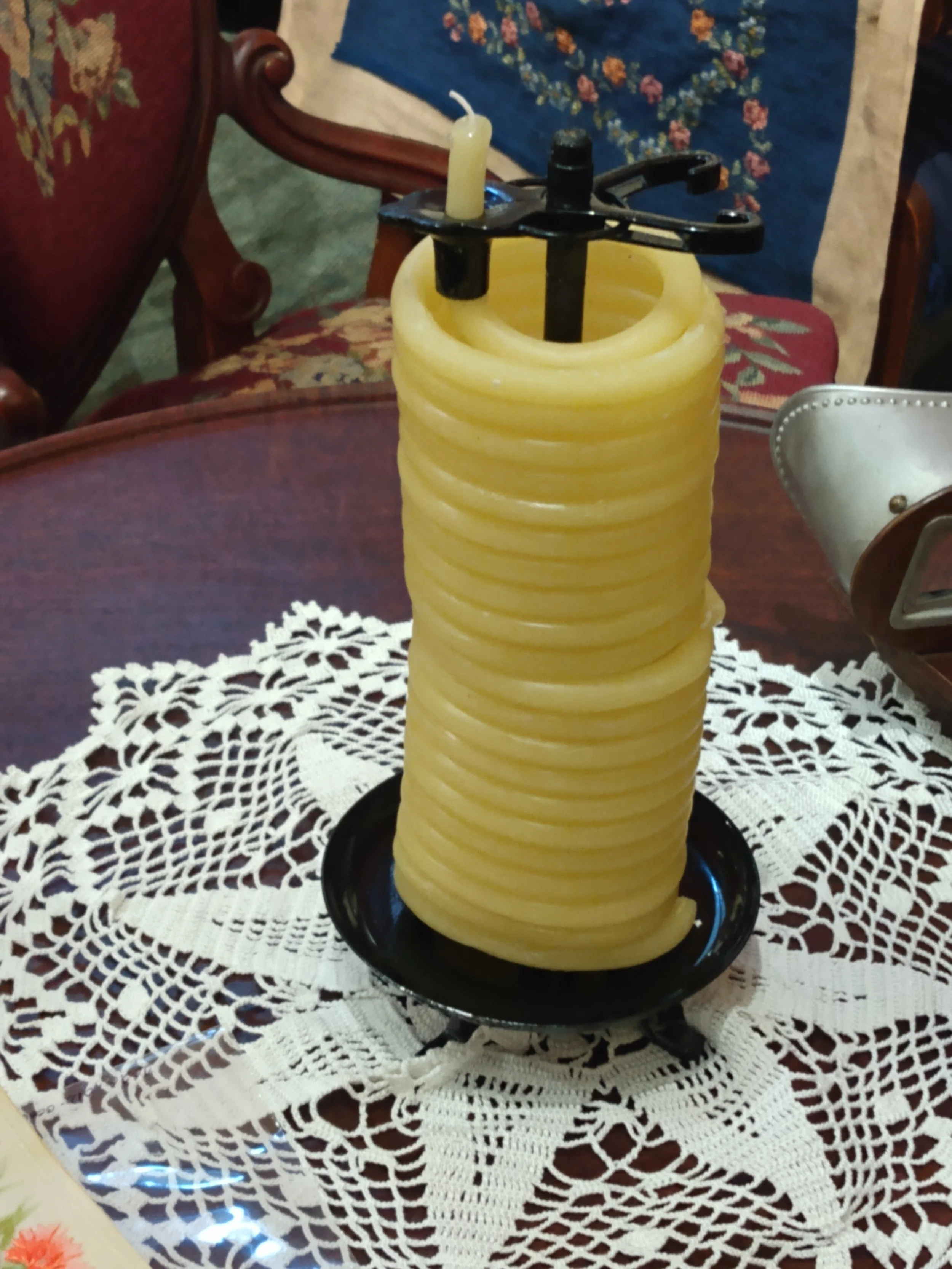A Candle For Courting
Something new is upstairs in the cozy sitting room in front of the flickering fireplace. Our gifted display artist, Laurie DeFazio, described it in “The Legend of the Courting Candle” signage.
Colonial fathers used these candles to set boundaries for their daughters of courting age. When a suitor came to call, the father could hand this candle to the caller as a light-hearted –or not– reminder to limit the time spent alone together in the sitting room with his daughter. When the flame reached the first marking bar holding the candle, the suitor must excuse himself and leave; the “date” was over. The humorous part was that if the father liked the caller, he could adjust a lever device on the candle to allow more time. If he thought the suitor was less than charming, he could use the same device to shorten the visiting time.
The Chicago Tribune in 1998 elaborated on theories behind the origin of the courting candle. They favored the likelihood that immigrants to Pennsylvania brought the candles in spiral metal holders from Germany to the colonies. Detractions to this idea for the use of candles might be that early processing technology of extracting oils from seeds and olives would have been expensive and candles would have been a precious source of light not to be wasted on frivolity.
Also, honey bees were not introduced to this continent until 1622, so beeswax would have been rare and expensive although sweet-smelling. Tallow, which was used to make soap using ashes from the fire, could also be used to make candles. These were not sweet-smelling, which hardly seems conducive to romance. However, they would have been much cheaper to make than the later beeswax candles. Colonists could also use fat in lamps for light.
Another negative about tallow candles was that they could be too soft to stand without candle holder supports. A curved drip pan beneath could keep animal fats off the table and also conserve melted wax which could be re-used.
Historical evidence shows that in China, candles were made of whale fat as early as 200 B.C. during the Qin Dynasty. Even earlier, in 400 B.C., Egyptians used the first form of the candle and also developed holders to keep candles upright. But the Japanese claim the first scented candles of wax extracted from tree nuts. In India, candlemakers also boiled cinnamon tree fruit to make good-smelling candles.
The courting candle in the upstairs sitting room is made with beeswax, which identifies it as a more modern artifact.
~
